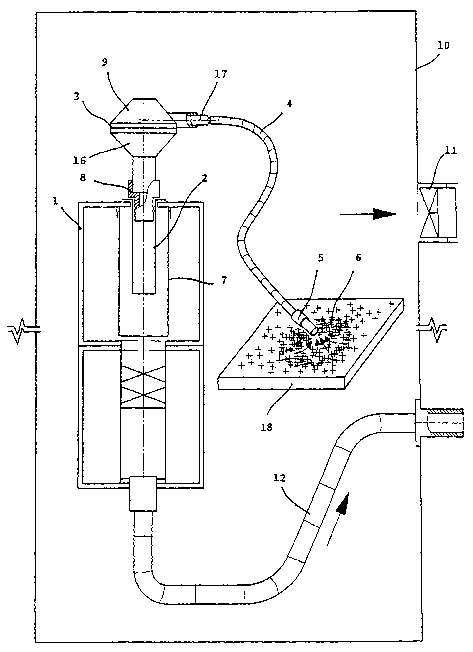Une partie des informations de ce site Web a été fournie par des sources externes. Le gouvernement du Canada n'assume aucune responsabilité concernant la précision, l'actualité ou la fiabilité des informations fournies par les sources externes. Les utilisateurs qui désirent employer cette information devraient consulter directement la source des informations. Le contenu fourni par les sources externes n'est pas assujetti aux exigences sur les langues officielles, la protection des renseignements personnels et l'accessibilité.
L'apparition de différences dans le texte et l'image des Revendications et de l'Abrégé dépend du moment auquel le document est publié. Les textes des Revendications et de l'Abrégé sont affichés :
| (12) Demande de brevet: | (11) CA 2463383 |
|---|---|
| (54) Titre français: | PROCEDE ET DISPOSITIF DE NETTOYAGE DU POLLEN |
| (54) Titre anglais: | POLLEN CLEANING METHOD AND DEVICE |
| Statut: | Réputée abandonnée et au-delà du délai pour le rétablissement - en attente de la réponse à l’avis de communication rejetée |
| (51) Classification internationale des brevets (CIB): |
|
|---|---|
| (72) Inventeurs : |
|
| (73) Titulaires : |
|
| (71) Demandeurs : |
|
| (74) Agent: | NORTON ROSE FULBRIGHT CANADA LLP/S.E.N.C.R.L., S.R.L. |
| (74) Co-agent: | |
| (45) Délivré: | |
| (86) Date de dépôt PCT: | 2002-06-17 |
| (87) Mise à la disponibilité du public: | 2003-05-22 |
| Licence disponible: | S.O. |
| Cédé au domaine public: | S.O. |
| (25) Langue des documents déposés: | Anglais |
| Traité de coopération en matière de brevets (PCT): | Oui |
|---|---|
| (86) Numéro de la demande PCT: | PCT/CZ2002/000035 |
| (87) Numéro de publication internationale PCT: | WO 2003041840 |
| (85) Entrée nationale: | 2004-04-08 |
| (30) Données de priorité de la demande: | ||||||
|---|---|---|---|---|---|---|
|
La base de ce procédé de nettoyage du pollen consiste à aspirer le pollen contaminé (6) à l'aide d'un écoulement d'air qui transporte le pollen vers la partie conique (16) du séparateur (3) constitué d'un matériau isolant, dans lequel les particules de pollen pur tombent à travers le séparateur sur le filtre (2) alors que les impuretés tournent dans un champ électrostatique généré par le frottement du séparateur (3). Le dispositif utilisé pour la mise en oeuvre de ce procédé comprend une unité d'aspiration (1) avec un filtre (2). L'orifice de sortie du séparateur (3) débouche sur le filtre. Dans la zone de plus grand diamètre du séparateur, l'orifice de sortie de la ligne d'aspiration d'un diamètre variable est relié tangentiellement au séparateur (3) qui comprend une partie d'aspiration (5) pour l'aspiration du pollen contaminé (6).
The basis of the pollen cleaning method is that the contaminated pollen (6) is
sucked by airflow carrying the pollen to the conical part (16) of the
separator (3) made of insulating material where pure pollen particles fall
through the separator onto the filter (2) while the impurities rotate in
electrostatic field generated by separator (3) friction. The device used for
implementation of this method consists of a suction unit (1) with a filter
(2). To the filter is led the separator outlet (3). In the area of the
greatest separator diameter, the outlet of the suction line of a variable
diameter is tangentially connected to the separator (3) incluidng a suction
part (5) for contaminated pollen (6) suction.
Note : Les revendications sont présentées dans la langue officielle dans laquelle elles ont été soumises.
Note : Les descriptions sont présentées dans la langue officielle dans laquelle elles ont été soumises.

2024-08-01 : Dans le cadre de la transition vers les Brevets de nouvelle génération (BNG), la base de données sur les brevets canadiens (BDBC) contient désormais un Historique d'événement plus détaillé, qui reproduit le Journal des événements de notre nouvelle solution interne.
Veuillez noter que les événements débutant par « Inactive : » se réfèrent à des événements qui ne sont plus utilisés dans notre nouvelle solution interne.
Pour une meilleure compréhension de l'état de la demande ou brevet qui figure sur cette page, la rubrique Mise en garde , et les descriptions de Brevet , Historique d'événement , Taxes périodiques et Historique des paiements devraient être consultées.
| Description | Date |
|---|---|
| Demande non rétablie avant l'échéance | 2007-06-18 |
| Le délai pour l'annulation est expiré | 2007-06-18 |
| Réputée abandonnée - omission de répondre à un avis sur les taxes pour le maintien en état | 2006-06-19 |
| Inactive : CIB de MCD | 2006-03-12 |
| Inactive : Page couverture publiée | 2004-06-11 |
| Inactive : Notice - Entrée phase nat. - Pas de RE | 2004-06-09 |
| Inactive : Inventeur supprimé | 2004-06-09 |
| Demande reçue - PCT | 2004-05-11 |
| Exigences pour l'entrée dans la phase nationale - jugée conforme | 2004-04-08 |
| Demande publiée (accessible au public) | 2003-05-22 |
| Date d'abandonnement | Raison | Date de rétablissement |
|---|---|---|
| 2006-06-19 |
Le dernier paiement a été reçu le 2005-05-20
Avis : Si le paiement en totalité n'a pas été reçu au plus tard à la date indiquée, une taxe supplémentaire peut être imposée, soit une des taxes suivantes :
Veuillez vous référer à la page web des taxes sur les brevets de l'OPIC pour voir tous les montants actuels des taxes.
| Type de taxes | Anniversaire | Échéance | Date payée |
|---|---|---|---|
| Taxe nationale de base - générale | 2004-04-08 | ||
| TM (demande, 2e anniv.) - générale | 02 | 2004-06-17 | 2004-05-05 |
| TM (demande, 3e anniv.) - générale | 03 | 2005-06-17 | 2005-05-20 |
Les titulaires actuels et antérieures au dossier sont affichés en ordre alphabétique.
| Titulaires actuels au dossier |
|---|
| JIRI TOMEK |
| Titulaires antérieures au dossier |
|---|
| S.O. |